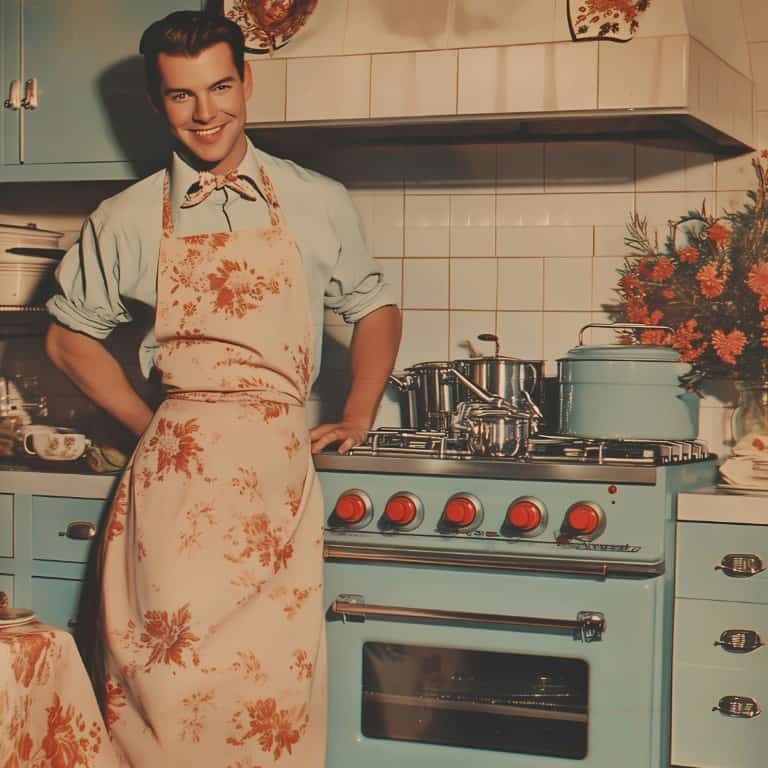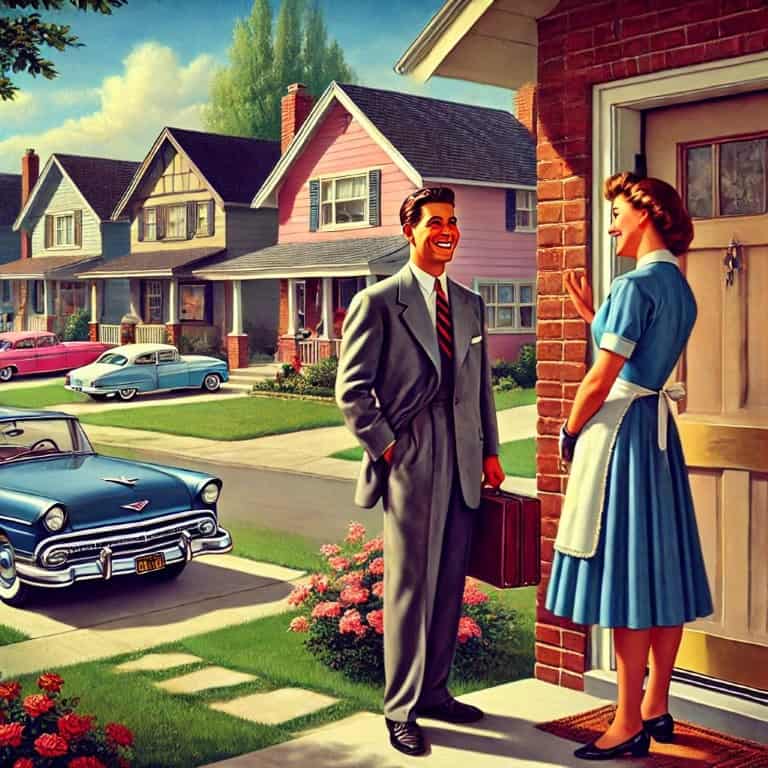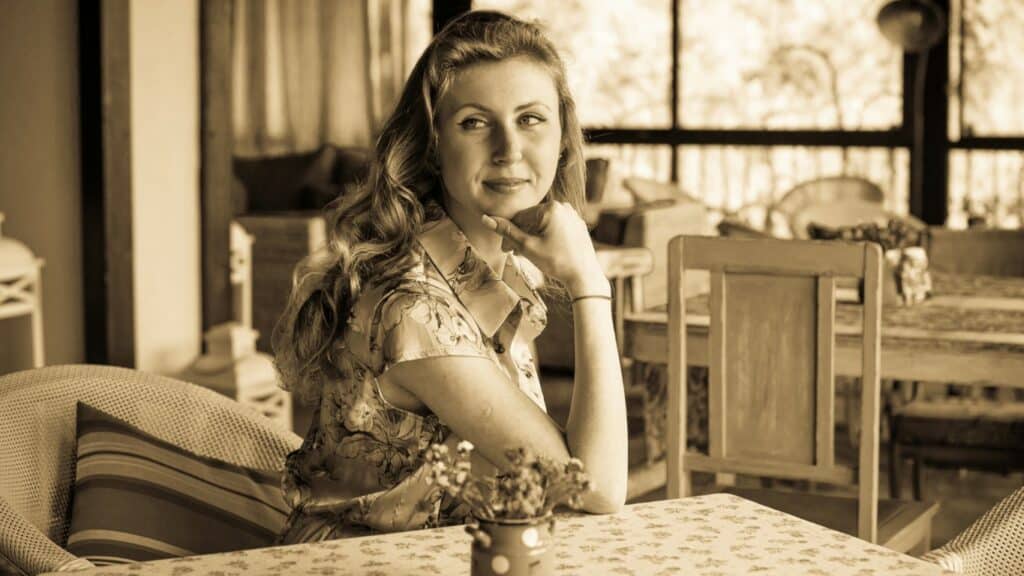The 1950s remain an iconic decade, often celebrated for its unique style, music, and cultural shifts. This was also a pivotal era for the workforce, where the roles of men and women began to evolve in exciting ways. Let’s take a deep dive into the most popular jobs of the 1950s, exploring how these roles influenced the social fabric of the time and what they reveal about the economic landscape of post-war America.
According to the Bureau of Labor Statistics, by the late 1950s, blue-collar jobs accounted for nearly 60% of all jobs in America. The rise of television in American homes during the 1950s also played a significant role in shaping public perceptions of these jobs, with shows like “Leave It to Beaver” portraying idealized suburban life.
The Boom of the Blue-Collar Worker
The post-war era was a time of economic boom in the United States, significantly expanding the middle class. For many men, this expansion translated into an abundance of blue-collar jobs. Industries such as automotive, steel, and construction saw a significant rise, fueled by a nation eager to build and expand. Men found themselves in roles that were hands-on and often physically demanding. These jobs were not just a means of livelihood; they symbolized the American dream—stable employment that promised a comfortable life for families.
And let’s not forget the idea of men taking on housewife roles during this period was practically nonexistent. Can you imagine a man in an apron, whipping up dinner while discussing the latest gossip with the neighbors? That would have been quite a spectacle!
dinner while discussing the latest gossip with the neighbors? That would have been quite a spectacle!
Women, although still predominantly in the home, also began to see shifts in their work opportunities. The end of World War II had brought many women into the workforce, and while some returned home, others stayed on, marking a slow but sure transition in the traditional gender roles. Jobs like secretarial work, teaching, and nursing were highly popular among women, roles that required soft skills—empathy, organization, and communication—skills that were, and still are, highly valued in the workplace.
This gradual shift not only altered professional landscapes but also transformed domestic expectations, as women began to challenge traditional roles within their households.
Air Travel Jobs in the 1950s
As the world became more connected, air travel boomed in the 1950s, opening up new job opportunities. For men, this meant roles like pilots and engineers became highly coveted. The allure of the skies represented a frontier of modern technology and adventure, attracting those who desired to be part of the cutting-edge of transportation.
Women also made their mark in this sector, most notably as flight attendants. This glamorous and coveted role also required them to be the face of the airline’s customer service. The job was about more than just serving meals and managing safety; it was about creating an experience for the traveler that reflected the sophistication and excitement of air travel during the golden age of the jet set.
The Shining Success of Aluminum Can Manufacturers
The 1950s also witnessed a surge in consumer goods like toilet paper, leading to an increased demand for packaging solutions. This era saw the rise of aluminum can manufacturers as key players in the American economy. Both men and women found opportunities in this booming industry. Men typically worked in the production lines, handling the heavy machinery required to manufacture the cans. On the other hand, women often found roles in quality control, ensuring that each can meet the necessary standards before it made its way to consumers.
This industry stands out as a beacon of innovation and growth during the 1950s. Aluminum cans were a marvel of engineering at the time, symbolizing progress and modernity. They provided a lightweight, efficient way to package and preserve food and beverages, significantly changing the way people consumed products and manufacturers didn’t have access to resources like keychain.com to pick from a variety of packaging that we do today. The work in these factories was more than just a job; it was a part of a larger movement that was propelling America forward, making the everyday lives of millions more convenient and modern.
The Rise of the Suburban Salesman
As American families moved to the suburbs, a new character emerged prominently in the 1950s landscape: the door-to-door salesman. This role was predominantly filled by men, who traveled through newly constructed neighborhoods, selling everything from encyclopedias to vacuum cleaners. The personal touch of face-to-face selling was critical in this era before the digital age, and these salesmen were often seen as bearers of modern conveniences that could enhance domestic life.
This period also saw the emergence of marketing and advertising as a driving force in the American economy. The need to persuade and inform consumers about products created jobs in advertising agencies, where creativity and persuasion skills were prized. Men dominated these spaces, crafting campaigns that would become cultural icons, while women often took on supporting roles, such as assistants or in customer service, contributing significantly behind the scenes.
Educational Expansion and the Empowered Woman
The 1950s were a transformative time for women in terms of fashion and educational opportunities. As more women pursued higher education, they began to enter professions that were previously the preserve of men. Teaching, previously a popular choice, saw an influx of highly educated women who brought new perspectives and knowledge into the classroom, enriching the educational experience for their students.

The decade saw an increase in women in healthcare, particularly in nursing. This was not only due to the demand for more healthcare professionals but also because of the societal recognition of nursing as a noble profession. The respect and admiration for the caring professions marked a significant shift in how women’s work was viewed in society, reflecting broader changes in the perception of women’s roles both at home and in the workplace.
The decade was not just about the jobs people did; it was about the societal shifts those jobs represented, marking a significant period in the evolution of the American workforce. As we look back, it’s clear that the 1950s continue to influence our modern work culture, reminding us of a time of innovation, expansion, and the beginning of new opportunities for both men and women in the workplace.
The groundwork laid in the 1950s paved the way for subsequent movements advocating for gender equality and workers’ rights, profoundly shaping today’s workforce dynamics.
